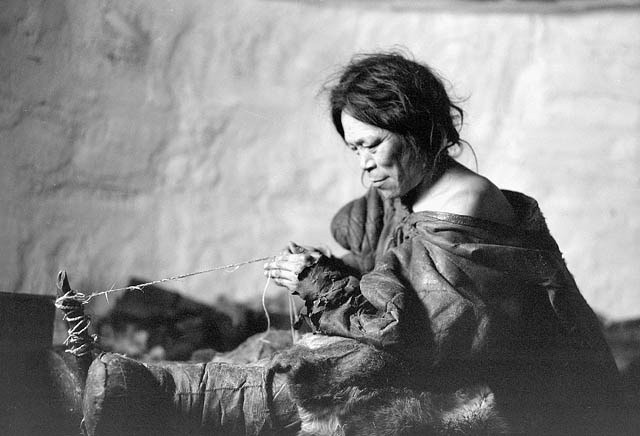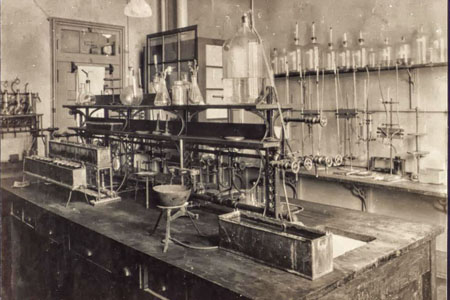Browse "Science & Technology"
-
Editorial
The Avro Arrow is Cancelled
The following article is an editorial written by The Canadian Encyclopedia staff. Editorials are not usually updated.
"https://d2ttikhf7xbzbs.cloudfront.net/media/media/25cf1480-ddea-403e-8607-2241587bcf3d.jpg" // resources/views/front/categories/view.blade.php
https://d2ttikhf7xbzbs.cloudfront.net/media/media/25cf1480-ddea-403e-8607-2241587bcf3d.jpg
-
Article
Babiche
Babiche is a type of string traditionally made by Indigenous peoples from rawhide and had multiple uses, such as to lace snowshoes, fishing nets, drumheads and the like. Though typically considered a French Canadian term, babiche is an Algonquian word, loosely translating to “cord” (in Mi’kmaq, ababich) or “thread” (in Ojibwa, assabâbish).
"https://d2ttikhf7xbzbs.cloudfront.net/media/media/03dfd24b-95c1-44ad-8ce5-d0ecf4578831.jpg" // resources/views/front/categories/view.blade.php
https://d2ttikhf7xbzbs.cloudfront.net/media/media/03dfd24b-95c1-44ad-8ce5-d0ecf4578831.jpg
-
Article
Bacteria
Bacteria are microscopic single-celled organisms capable of rapid growth and division.
"https://development.thecanadianencyclopedia.ca/images/tce_placeholder.jpg?v=e9dca980c9bdb3aa11e832e7ea94f5d9" // resources/views/front/categories/view.blade.php
https://development.thecanadianencyclopedia.ca/images/tce_placeholder.jpg?v=e9dca980c9bdb3aa11e832e7ea94f5d9
-
Article
Balloon
Balloon, vehicle that can rise within Earth's atmosphere because its total weight is less than that of the air it displaces. This principle was first enunciated by Greek mathematician and inventor Archimedes.
"https://d2ttikhf7xbzbs.cloudfront.net/media/media/54457498-4781-48da-824a-8edcf16d9913.MOV" // resources/views/front/categories/view.blade.php
https://d2ttikhf7xbzbs.cloudfront.net/media/media/54457498-4781-48da-824a-8edcf16d9913.MOV -
Article
Beartrap (Helicopter Hauldown and Rapid Securing Device)
The “beartrap” was a Canadian innovation designed in the 1960s to enable the safe operation of helicopters from destroyer-size ships. Known formally as the Helicopter Hauldown and Rapid Securing Device (HHRSD), it is now an integral part of all Canadian frigates. The beartrap revolutionized maritime helicopter operations and was adopted by other navies.
"https://d2ttikhf7xbzbs.cloudfront.net/SeaKing/SeaKing-Beartrap.jpg" // resources/views/front/categories/view.blade.php
https://d2ttikhf7xbzbs.cloudfront.net/SeaKing/SeaKing-Beartrap.jpg
-
Article
Beaver (Steamer)
From 1862 to 1874 the HBC trader became Her Majesty's Hired Survey Ship Beaver. After the HBC sold the ship in 1874, it was used as a workhorse and tow until 1888, when it was wrecked in the First Narrows in Vancouver harbour. Only a few relics remain.
"https://d2ttikhf7xbzbs.cloudfront.net/media/media/0fe63fc6-63d8-4891-b455-e5b8d41feabe.jpg" // resources/views/front/categories/view.blade.php
https://d2ttikhf7xbzbs.cloudfront.net/media/media/0fe63fc6-63d8-4891-b455-e5b8d41feabe.jpg
-
Article
Biochemistry
Biochemistry, encompasses the study of the chemical nature of living material and of the chemical transformations that occur within it. Living things consist of many types of molecules (biomolecules) which, when isolated and examined, have no particular"living" characteristics, but behave in ordinary chemical ways. The properties of some of these molecules, especially large ones, are complex and subtle but are the result of the operation of chemical and physical laws. The special characteristics of living things arise from the ways in which these biomolecules are assembled within the cell and in the way they replicate. The methodology of biochemistry originated largely in physics, chemistry, immunology and genetics.
"https://d2ttikhf7xbzbs.cloudfront.net/media/media/350b6e59-1083-4f86-b24c-c0a1608e2fa0.jpg" // resources/views/front/categories/view.blade.php
https://d2ttikhf7xbzbs.cloudfront.net/media/media/350b6e59-1083-4f86-b24c-c0a1608e2fa0.jpg
-
Article
Biodiversity
Biodiversity is the variety of life (genetic, species and ecosystem levels) on Earth or some part of it. It includes all living forms, plants, animals and micro-organisms. It is the natural wealth of a region that provides resources and ecological services.
"https://d2ttikhf7xbzbs.cloudfront.net/media/media/525276c1-ee26-4c24-bc61-a4d499a68632.jpg" // resources/views/front/categories/view.blade.php
https://d2ttikhf7xbzbs.cloudfront.net/media/media/525276c1-ee26-4c24-bc61-a4d499a68632.jpg
-
Article
Bioethics
The word bioethics is formed from the Greek word for life (bios) and the traditional word for the systematic study of right conduct (ethics).
"https://development.thecanadianencyclopedia.ca/images/tce_placeholder.jpg?v=e9dca980c9bdb3aa11e832e7ea94f5d9" // resources/views/front/categories/view.blade.php
https://development.thecanadianencyclopedia.ca/images/tce_placeholder.jpg?v=e9dca980c9bdb3aa11e832e7ea94f5d9
-
Article
Biogeoclimatic Zone
For example, in British Columbia, the Coastal Western Hemlock Zone is one of 14 biogeoclimatic zones. It occupies high precipitation areas up to 1000 m elevation west of the coastal mountains from the Washington to Alaska borders and beyond.
"https://development.thecanadianencyclopedia.ca/images/tce_placeholder.jpg?v=e9dca980c9bdb3aa11e832e7ea94f5d9" // resources/views/front/categories/view.blade.php
https://development.thecanadianencyclopedia.ca/images/tce_placeholder.jpg?v=e9dca980c9bdb3aa11e832e7ea94f5d9
-
Article
Biogeography
Ecology is subdivided into 3 fields of study: autecology (relations of individual species or populations to their milieu), synecology (composition of living communities) and dynecology (processes of change in related communities).
"https://d2ttikhf7xbzbs.cloudfront.net/media/media/54274460-8bd9-4d7e-be56-42ebb9854f08.jpg" // resources/views/front/categories/view.blade.php
https://d2ttikhf7xbzbs.cloudfront.net/media/media/54274460-8bd9-4d7e-be56-42ebb9854f08.jpg
-
Article
Biological Oceanography
Biological Oceanography is a branch of oceanography that studies living organisms (ie, the biota) in the sea in relation to their environments.
"https://development.thecanadianencyclopedia.ca/images/tce_placeholder.jpg?v=e9dca980c9bdb3aa11e832e7ea94f5d9" // resources/views/front/categories/view.blade.php
https://development.thecanadianencyclopedia.ca/images/tce_placeholder.jpg?v=e9dca980c9bdb3aa11e832e7ea94f5d9
-
Article
Biological Product
A biological product is a substance derived from a living organism and used for the prevention or treatment of disease. Biologicals are usually too complex for chemical synthesis by a laboratory. These products include antitoxins, bacterial and viral vaccines, blood products and hormone extracts.
"https://development.thecanadianencyclopedia.ca/images/tce_placeholder.jpg?v=e9dca980c9bdb3aa11e832e7ea94f5d9" // resources/views/front/categories/view.blade.php
https://development.thecanadianencyclopedia.ca/images/tce_placeholder.jpg?v=e9dca980c9bdb3aa11e832e7ea94f5d9
-
Article
Biology
Biological studies of individuals and groups of organisms can occur at various levels (eg, molecular, cellular, anatomical, functional, behavioural, ecological and evolutionary).
"https://d2ttikhf7xbzbs.cloudfront.net/media/media/8ff204ea-7793-42b9-9f34-39964ccf0d12.jpg" // resources/views/front/categories/view.blade.php
https://d2ttikhf7xbzbs.cloudfront.net/media/media/8ff204ea-7793-42b9-9f34-39964ccf0d12.jpg
-
Article
Biomass Energy
Biomass energy, or bioenergy, is the energy stored in biomass — that is, nonfossil organic materials such as wood, straw, vegetable oils and wastes from forestry, agriculture and industry, as well as municipal solid waste.
"https://development.thecanadianencyclopedia.ca/images/tce_placeholder.jpg?v=e9dca980c9bdb3aa11e832e7ea94f5d9" // resources/views/front/categories/view.blade.php
https://development.thecanadianencyclopedia.ca/images/tce_placeholder.jpg?v=e9dca980c9bdb3aa11e832e7ea94f5d9

